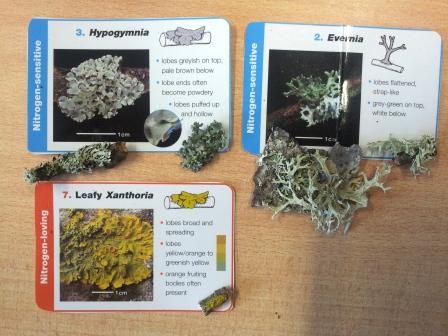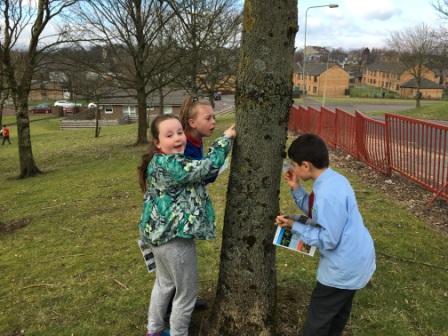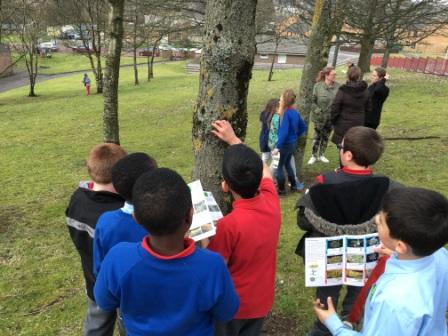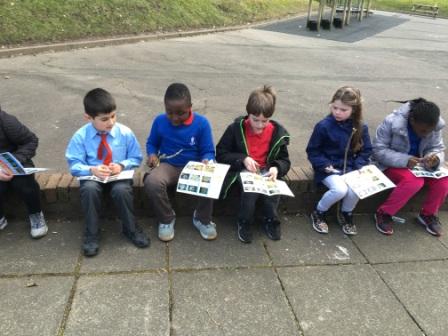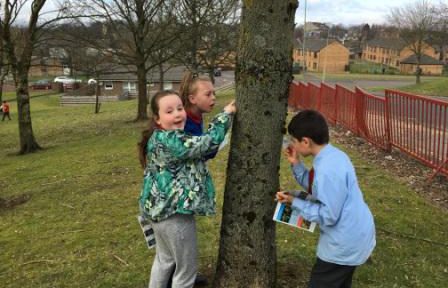
Thanks to funding from the British Science Association, we were able to run two Citizen Science sessions with a class of P5’s from St Mary’s Primary School in Maryhill. This was part of British Science Week, and what a lovely week it was!
In our first session we introduced the children to the world of lichen and used it to help them understand the importance and impacts of air quality. Lichen, that funny plant like structure we see growing everywhere, is a fantastic indicator of air quality as it is very sensitive to nitrogen and ammonia in the air which are caused by traffic, industrial, and agricultural pollution. You can look at different species of lichen to work out what the air quality is like in your local area. A general rule is that if you find lots of bushy lichens, the air is clean, whereas if you find mostly crusty and yellow lichens and no bushy ones at all it suggests the air is polluted.
In our second session with the children, we took them on an adventure down to the lower Kelvin walkway in Glasgow to look at the lichen growing on the trees by the river. Here we taught them how to conduct an air quality by looking at lichen, using an air quality survey pack from OPAL (The Open Air Laboratories).
To carry out the survey the children first had to learn to identify the nine more common types of lichen. This is a challenge even for adults but the children really impressed us and they used scientific names of lichen species such as Melanelixia and Xanthoria very confidently. Here are some of the children’s comments on the sessions:
Cleopatra – ‘it was great because I didn’t know what lichens were and now I do.’
Rose –‘ I really enjoyed getting outside and out of the classroom.’
Eilidh – ‘I really liked learning about how to identify lichens and using the magnifying glasses.’
Aiden –‘ it was an extraordinary experience.’
Azan – ‘I liked using the tape to measure the girth of the trees.’
Keira – ‘I didn’t really know what lichens were until we found out more about them, I thought they were just moss.’
Chloe – ‘using the magnifying glass gave me a better view of what I was looking at.’
Conducting an air quality survey with children can do so much more than just teach them about lichen. It teaches them to read and understand what is going on in their environment, helps them apply what they have learn in other subjects such as maths to situations outside the class room, and encourages them to think about environmental issues that could affect them in the future and what they can do to help. And of course it gets them outside, engaging and learning with nature, which has been proven to help increase children’s well being, academic performance, health, and confidence.
It was a joy to spend time with the students from St Mary’s and we were amazed and very encouraged by the enthusiasm that the children had for the subject. The sessions certainly supported the idea that all children have a fascination for wildlife and other living things, but it’s up to us to provide opportunities for them to experience nature and to nurture and encourage that interest.

